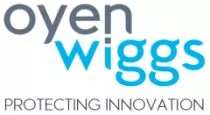There is currently keen interest amongst tech companies, investors, and research institutes in both artificial intelligence and blockchain technologies. The buzz has reached corporations and financial institutions looking to tailor these technologies for their own businesses in order to keep pace in our increasingly digitized economy. This excitement has implications for securing patent protection – Canada and the United States (as well as many other countries) operate on a "first to file" basis. That means you will want to file a patent application before other inventors monopolize protection for the technology in your area, potentially curtailing your competitive business advantage.
The United States Patent and Trademark Office (USPTO) has issued revised guidelines on what constitutes subject-matter that is eligible for patent protection (under 35 U.S.C. § 101), effective January 7, 2019. These guidelines will likely have the largest impact in the area of computer-implemented inventions, including artificial intelligence and blockchain technologies, and may make it easier to patent some of these inventions. Indeed, the USPTO gives specific illustrations of how the guidelines would be applied to an example artificial intelligence technology (training neural networks for facial recognition) and to an example authentication method that conceivably could be implemented in a blockchain system.
As background, in general terms, laws of nature, natural phenomena, and abstract ideas are not eligible for patent protection in the United States. Similarly, in Canada, any mere scientific principle or abstract theorem cannot be patented. The courts in both countries have considered this prohibition as posing a problem for patenting computer-implemented inventions. The revised guidelines from the USPTO aim to provide clarity in the United States by (1) defining subject-matter that the USPTO considers to be abstract ideas and noting that it will be rare for others to exist; and (2) clarifying that a claim in a patent or patent application is not "directed to" a patent ineligible concept, such as an abstract idea, if the concept is "integrated into a practical application" of that patent ineligible concept. Only if the claim is "directed to" a patent ineligible concept is further analysis under the existing framework required to determine whether the claim is eligible for patent protection.
The bottom line is that the USPTO will now consider a claim that recites a patent ineligible concept to be eligible for patent protection if the claim, when considered as a whole, integrates that concept into a suitable practical application. Notably, when making this assessment, the USPTO must give weight even to any claim elements thought to represent "well-understood, routine, conventional activity".
In Canada, the analysis would be different – in general terms, the practice of the Canadian Intellectual Property Office (CIPO) is to instead consider whether the computer is essential to the solution provided by the invention, including whether the same result could be arrived at without the computer, even if inconveniently (e.g., with pen and paper). The CIPO typically concludes that if the computer is essential, then the claim is eligible for patent protection.
In the context of artificial intelligence, the USPTO illustrates its revised analysis using an example method for training a neural network for facial detection and concludes that the method is eligible for patent protection. Key features of the example technology are that it uses an expanded training set and that it iteratively retrains a neural network using the incorrectly classified facial images. The USPTO concludes that the claim is eligible for patent protection because it does not recite any patent-ineligible concepts, including any of the categories of abstract ideas outlined in the revised guidance.
The USPTO also illustrates the revised analysis using an example method for establishing cryptographic communication – a type of method in an area that provides the security and authentication cornerstones in a blockchain system. A key feature of the example technology is that it avoids needing to securely share a private key used to encrypt and decrypt a message. The USPTO concludes that the claim is eligible for patent protection because although it recites a patent ineligible concept by reciting an encoding step with a mathematical formula (considered to be an abstract idea), it is integrated into a practical application because the other claim elements use the mathematical formula in a way that limits the math to the practical application of transmitting a ciphertext word to a computer.
The revised USPTO guidance also gives other select examples of patent eligible subject-matter in several other computer-related areas, such as those involving adaptive monitoring of a network based on network performance, notification systems for updated medical records, manipulation of graphical user interfaces, and digital simulation of high-quality audio.
Theoretically, the revised USPTO guidance provides a new way for the USPTO to conclude that a claim is eligible for patent protection. However, the revised USPTO guidance and the practice of the CIPO do not have the authority of law, although they do define the considerations for whether a patent will be granted by the respective office. It remains to be seen whether the revised USPTO guidance will result in more computer-implemented inventions being successfully patented in the United States and whether such patents will withstand scrutiny in a court of law.
As far as patent protection in Canada is concerned, the practice of the CIPO remains unchanged from that outlined above and continues to rest on the office's interpretation of the existing legal framework set out by the Federal Court of Appeal in Canada (Attorney General) v. Amazon.com Inc., 2011 FCA 328.
Whether your innovation involves convolutional neural networks, distributed ledgers in a blockchain system, or another computer-implemented technology, it may be commercially strategic for your business to protect your invention with patents. Careful contemplation of the technology and persuasive argument during prosecution will be key to that end.
To view the original publication click here
The content of this article is intended to provide a general guide to the subject matter. Specialist advice should be sought about your specific circumstances.

